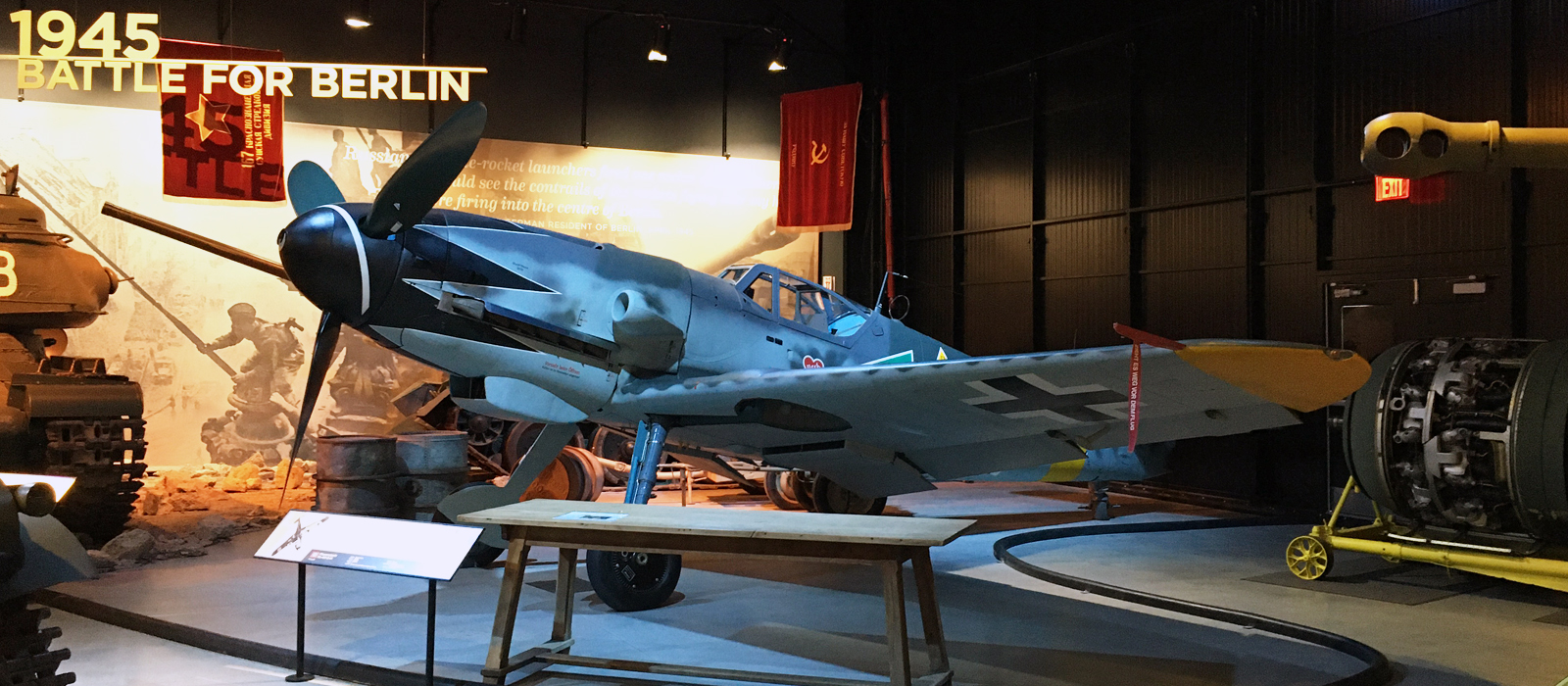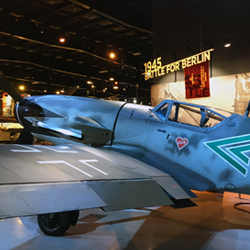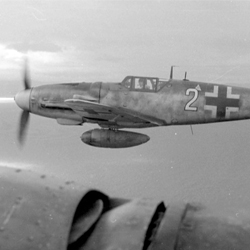The Me-109 was a light air superiority fighter that served as the foundation of the German Luftwaffe from 1936 until the end of World War II in 1945 and served in other European air forces until the mid 1950s. The Me / Bf 109 was the second most produced fighter just under the Russian Ilyushin Il-2 Shturmovik. There were just over 36,000 IL-2s made versus 34,000 Me / BF 109s produced. Roughly 28% of the entire Luftwaffe consisted of Bf and Me 109 variants.
The Bf-109 was developed by Wily Messerschmitt for Bayerische Flugzeugwerke AG(BFW) in like 1936 in a bid against three other companies(Foke-Wulfe, Heinkel, and Arado) to win a contract to build a light fighter plane for the Luftwaffe, of which specifications included a wing-loading of less than 100kg/m2, a top speed of 250 mph, a flight duration of at least 90 minutes, and an operational ceiling of 32,800ft. In designing this plane, Messerschmitt prioritized lightness, which coincidentally allowed for easier production because the method they used to achieve a lighter product involved consolidating what would typically be multiple parts into just one. He also correctly determined that the wing-load of 100kg/m2 was wildly low and would produce a plane that would be too slow for combat purposes, and instead opted for a wing-load around 200kg/m2. The 109 had a 32’6.5” wingspan, stood 8.5’ tall, and had an empty weight of 7055 lbs. Pilots, who were mostly used to low wing-loading, low ground angle, open cockpit biplanes had trouble adjusting to the 109, which was essentially the opposite of what they had used previously. Early versions of the 109(series A-D) were powered by the ~675HP Junkers Jumo 210, while the E and F series utilized the much more powerful 1085HP Daimler-Benz DB 601, and further still the G series, which consisted of roughly a third of all 109s developed, used the 1,455HP Daimler-Benz DB 605 engine.
Despite the prevailing narrative that the Me-109 had a terrible landing gear that lead to many more crashes during taxi than any other plane during the war, the design for the landing gear of the 109 was actually contemporaneous to many other planes of the time. The narrow landing gear was a move made in effort to keep the design of the wings simple and light; if they were designed to include a retractable landing gear the wings would have to be much sturdier (and therefore heavier) to bear the weight of the plane. The landing gear in the fuselage also allowed the wings to be removed from the plane for storage and allow it to stay standing, eliminating a need for something to prop them up. In fact, pilots who received appropriate training for the Bf 109 actually believed the plane taxied quite well, and trouble only really arose in the later years when undertrained and inexperienced pilots were the norm. Furthermore, 109 losses attributed to crashes during taxi made up about 10% of the total 109 losses, which is about on par with the average for most other planes at the time.
The 109 served many different purposes throughout the length of the Second World War. They provided air support during the invasion of Poland and entirely outmatched the Polish PZLP.11, which just a few short years previous was considered to be one of the most advanced fighters around. They served throughout the invasion of France, thoroughly thwarting the French Morane-Saulnier M.S.406 and the Dewoitine D.520. They fought during the battle of Britain against the Supermarine Spitfire and Hurricanes, the former of which proved to be the Messer’s first true challenge of the war. 109’s counted for 534 losses from the beginning of the Battle of Britain on July 10th, 1940, until the close of the battle, at the end of October that year. They fought on the eastern front with the intent of completely wiping out the Red Air Force both in dogfights in the air and during land raids. They also escorted German heavy bombers throughout Operation Barbarossa. Most Me-109 pilots found their success in the eastern front, the most notable of whom became Erich Hartmann, the highest scoring fighter ace of all time, with 352 kills.
The beginning of the end for the Me 109 as an unparalleled force of aviation began in August 1942 with the introduction of American heavy bombers, such as the B-17, that gave the Allies the ability to bring the fight into German territory. The entire war for the Luftwaffe had been offensive, and because of this only two 109 units were stationed to defend the Reich. On top of this, German pilots had never encountered a bomber like the B-17 that could take such a punishment as well as dish it out.
The introduction of the P-51 Mustang to the European Theater in the spring of 1944 marked the end of the Luftwaffe’s air superiority over Europe. The Mustang had a much greater performance and handling than the Me 109 and it also had the endurance to not only outlast the short-legged Messer but also escort heavy bombers all the way to their targets and back.
There is much discussion regarding whether the official designation for the 109 is Bf 109 or Me 109. It doesn’t help that official Nazi documentation used both Bf and Me at the same time during the war. It seems it bares import to discuss where these designations came from. BFW initially used the designation Bf as an abbreviation of their name for all of their designs. The company was sold to Wily Messerschmitt in 1938 and the official designation for all future designs from the company was set to Me instead of Bf. However, pilots throughout the war on both sides would use both, and it doesn’t seem to matter much. For the sake of extreme technical correctness, however, one should probably use Bf.
This Me 109 is currently on display in the Battle for Berlin exhibit in the American Heritage Museum.






